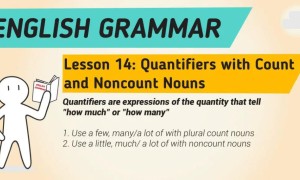Say / Tell / Speak / Talk
1.Say :
主要是用嘴巴说,比较口语。
Say通常跟讲者所说的话一起使用,不论是直述句或陈述句:
例句像是Say you love me.
不是口说,而是信、书、报上说都用say,不可用tell、talk、speak
例句像是The paper says that it might rain this evening.
2.Tell:
谈话、说故事、告诉等等意思。
tell 并不是用于引述别人所说的话语,而是表达别人的说话中所述的事实或资料
在陈述一项命令句中,应用 tell 而不用 say:He told me not to stay up late.
例句像是Tell a story. / Tell me about yourself.
tell可作”辨别”、”泄露(秘密)”、”显示”讲,say、talk、speak无此含义
例句像是 He cannot tell right from wrong.
3.Speak:
也是”说”的意思,比较像是单方面的说话,或是演讲、声明。
Speak比较庄重,表示某人(即讲者)在一段对话中所说的话较其它人多。
例句像是 The child hasn’t learnt to speak yet. / Who’s speaking?—This is Peter speaking.(电话中常用句型)
说某人的好话或坏话用speak
He always speaks well of you to my face.

4.Talk:
表达两人以上的交流与谈话、讨论
Talk不及speak庄重,而且多用于说话,少用于书写。
在书写英语, talk 很少用作及物动词,除非在 talk 后接用以下的受词:Stop talking nonsense.
若不是接用上列的受词,talk 后必需接用前置词 about: Jim and I sat on a bench and talked about our dreams.
来个小测验吧!
1. Don’t ever _________this secret to anybody!
2.Before this party is over, I just wanted to______ “thank you”to everyone.
3.I really need to _____ to someone about my problem.
4.Victor ________ fluent English.
5.He_______ me about the accident.
答案: tell / say / talk / speaks / told
See / Look / Watch
1. see:
是指「无意」或「有意」的「看」
跟自身的意图无关,使用于事物自然而然地出现在眼前时。
例句像是:I can see the bus coming.
动词 see 以现在进行式的情形很少,但偶尔会有以现在进行式使用的情况,
其意义不是“看”,而是“交往”
例句像是Susan and James have been seeing each other for 3 months.
(中文:Susan和James已经交往了3个月。)
can see …是「看得到」的意思,表示在你的视力范围之内:
Can you see that ship on the horizon?
你看得到地平线上的那艘船吗?
see有「理解」的意思。此时see可以和can或could连用:
I see, so this is the best way.
我了解了,所以这是最好的办法。
see也表示和别人「碰面」、「会面」:
I’m seeing my mother this weekend.
我这周末要和我妈碰面。
2.look :
表达带有意图,仔细地看某样东西的动作。
look的意思是”看起来”的不及物动词。因此,想要以”看着”的意思来使用的话,look后面一定要接上介系词at。
例句像是 Amanda looks beautiful today. / Look at the picture we took the other day. 阿曼达今天看起来很漂亮 / 看我们那天拍的照片
3. watch:
look 是使用于观看静止的东西,而watch 用来表达观看移动中的事物。
「看电影」可用 see 或 watch,但「看电视」就只能用watch。但若是指看电视上的影片,则又可以用 see。
其他用法像是 Watch out the car! 小心车子!
如果要表示「已经看过」一部电影或一场比赛,我们多用see这个字,而不用watch:Did you see that film on TV last night?
Put on / Wear
1.put on:
穿上衣服的动作
I am putting on a coat.我现在正在把外套穿上。 (动作)
2.wear:
表达已经穿着的状态
I am wearing a coat. 我现在已经穿着外套了。 (状态)
关于put on,可以参考这个影片! (顺便可以了解put up with / put away / put together各是什么意思呦!)
Price / Charge / Fee / Bill / Check
1. Price:
购买某样东西时,所必须拿出的钱,价格
例句像是:He is good at haggling(杀价). So he always buys things at reduced prices.他很会杀价,所以他都能用比较低的价格买到物品
2.Charge:
为了得到服务而支付的的金钱
例句像是:I pay monthly charge of $1500 for my home security service.
3.Fee:
为了做某件事所支付的金钱
有入场费的意思,也有为了得到医生或是律师等专家的服务,所支出的费用。
例句像是:Everyone has to pay an entrance fee to enter this park.
4.Bill:
“bill” 则是我们每月要缴付的水电、电话、信用卡等的费用。
例句像是: A 10% service charge is added on to the bill.
5.Check:
支票,在美国和银行之开的金钱往来主要是以支票(check)为重,而不是如网路银行和atm
餐厅的帐单也用 “check”,例句像是:May I have the check, please? (在餐厅跟服务生要帐单)







